Petrit Halilaj reflects on trauma and hope at Tate St Ives
On view until 16 January at Tate St Ives, Petrit Halilaj's exhibition ‘Very volcanic over this green feather’ combines childhood drawings, made in a refugee camp during the Kosovo war, landscapes and birds with scenes of wartime devastation
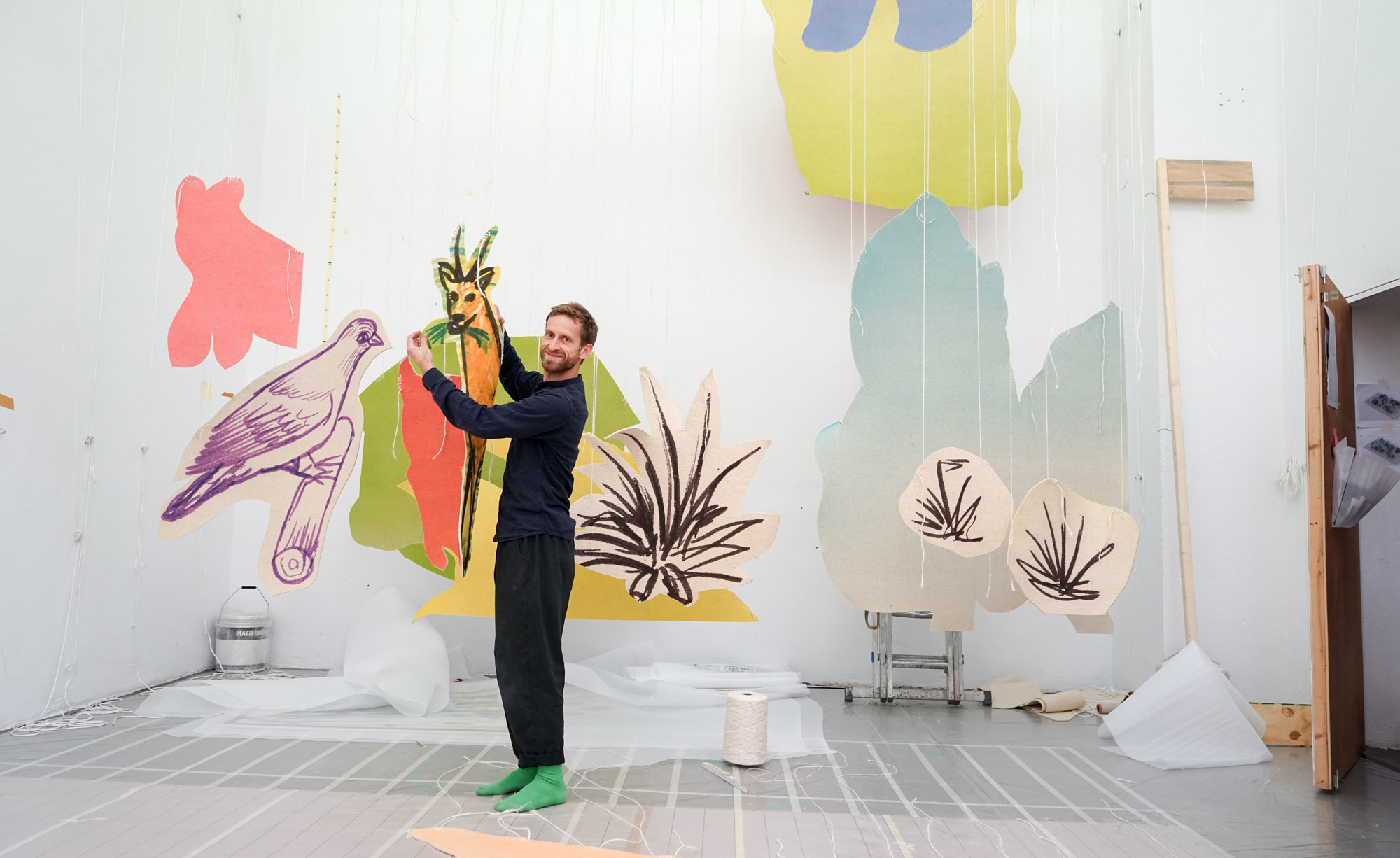
In 1999, when Petrit Halilaj was 13, Serbian troops swept through his native Kosovo and forced him and his family to flee into refugee camps in nearby Albania. Wartime destruction, forced displacement and loss came to define his youth, and eventually shaped his career as an artist. Now one of the foremost cultural figures to have emerged from his young homeland, he has explored these themes with poignant urgency.
Cultural identity, nationhood and heritage
At the Berlin Biennale in 2010, Halilaj famously reconstructed the scaffolding of his family home, which was burned down in the village of Kostërc during the war and would later be rebuilt in the capital city of Pristina, and let loose a flock of live chickens as symbols of rural life and recovered freedom. He subsequently meditated on migration and integration through large-scale recreations of the jewellery that his mother had buried in the soil in their original home when they prepared to escape, and by filling an Art Basel booth in 2011 with the same soil.
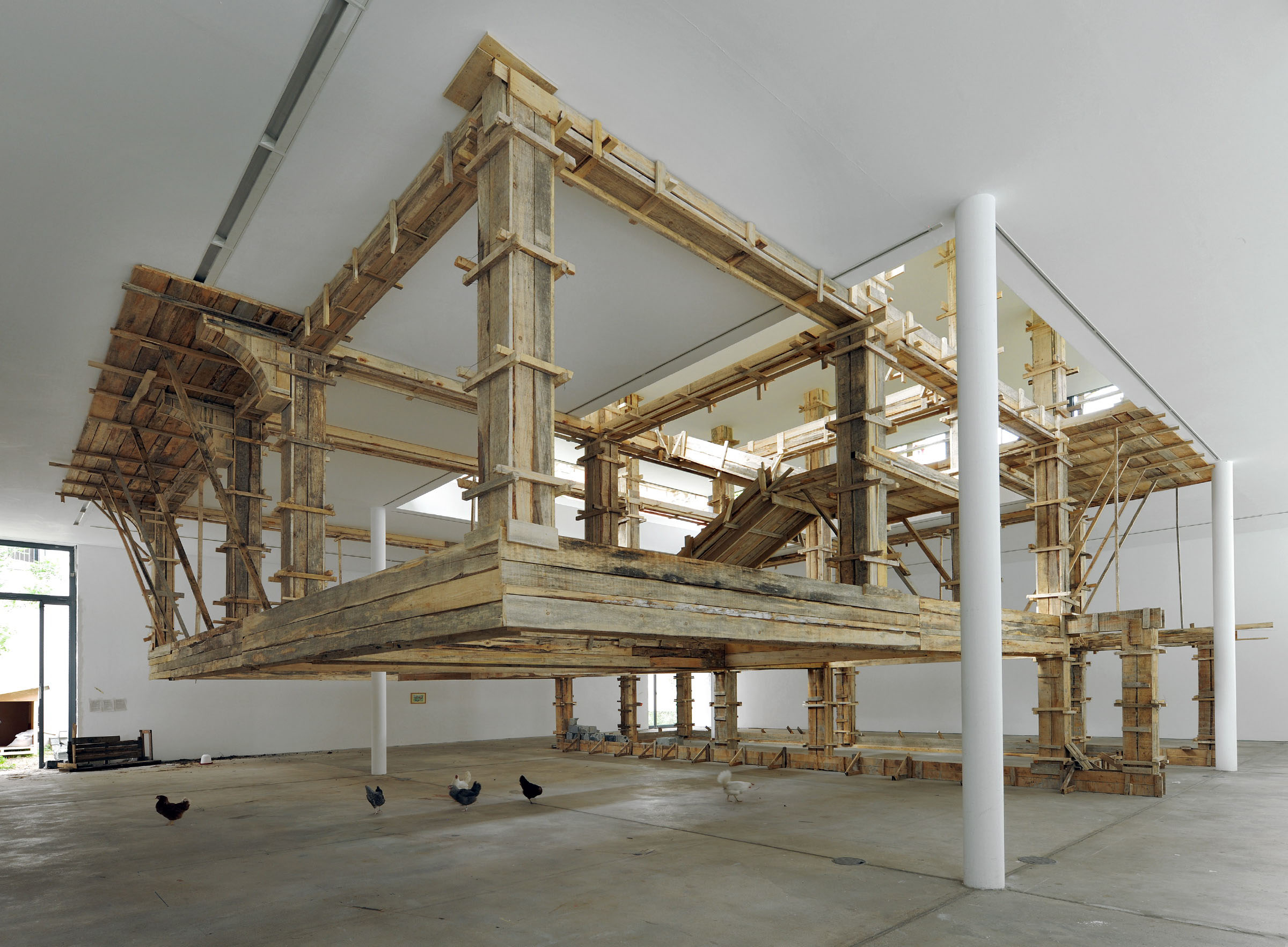
Halilaj’sThe places I’m looking for, my dear, are utopian places, they are boring and I don’t know how to make them real; installed at Berlin’s KW Institute for Contemporary Art for the 6th Berlin Biennale, 2010. courtesy of the artist
Contemplating wider themes of nationhood, he created a giant bird’s nest out of Kosovan soil, branches and twigs for the country’s first pavilion at the Venice Biennale two years later, and then resurrected specimens from the vanished Natural History Museum of Pristina for a solo show at the Wiels Contemporary Art Centre in Brussels.
Adding to this more recent projects – such as Ru (2017), inspired by Neolithic artefacts from the town of Runik that wound up in Serbian hands because of the war and remain inaccessible to Kosovars; and Shkrepëtima (2018), which presented collective memories of Runik’s citizens as a performance on the ruins of the former House of Culture – and Halilaj’s ability to give widely resonant form to his personal histories becomes abundantly clear.
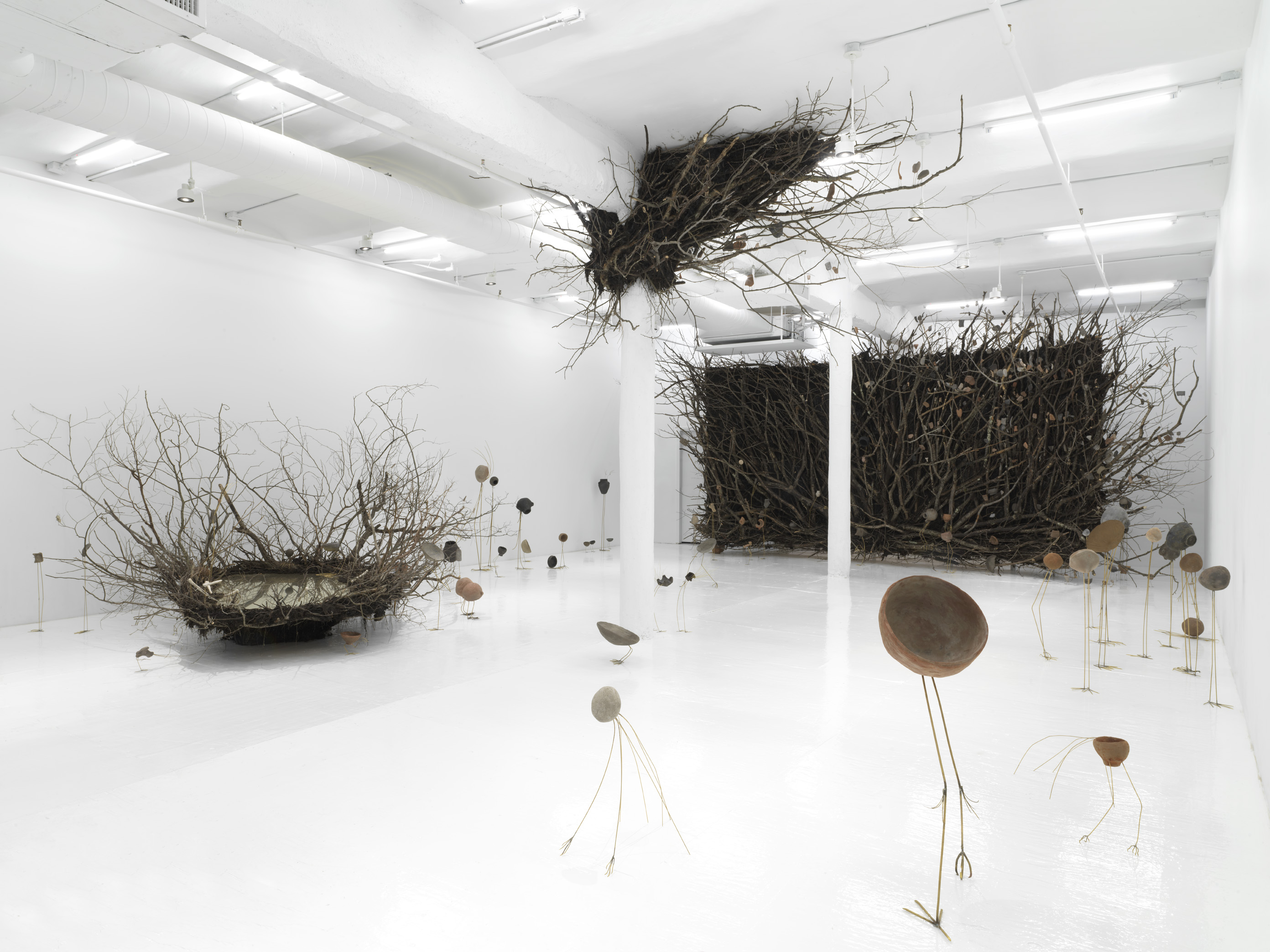
Haliaj's Ru, installation view at New Museum, New York, 2017. courtesy of the artist, ChertLüdde, Berlin, kamel mennour, London/Paris
Petrit Halilaj's new exhibition at Tate St Ives
There is, however, one aspect of his biography that Halilaj was hesitant to mine for many years – his actual experience of the Kosovo War, which he is finally drawing on for a major installation at Tate St Ives, his first solo exhibition in a UK museum. ‘For a very long time, I preferred to not talk about it, or to not remember it in detail, because I’m fascinated by what I can do today, speaking to personal and national identity, and what it means on a larger scale,’ he explains over Zoom from his Berlin studio. ‘I never went back to the conflict, and I was very annoyed by journalists who were interested in my experiences as a refugee.’
What changed? The passage of time, which empowered Halilaj to finally confront his traumas head-on. Ongoing experiences of erasure, which prompted a realisation of how a conflict from two decades ago continues to reverberate in contemporary politics (in 2019, the president of Serbia expressed public support for the demonstrably false claim that the Račak massacre of 1999 never happened). There was also the Covid-19 pandemic, which compelled the normally peripatetic artist to slow down and revisit his memories.
In lockdown, he had plenty of time to call an old friend, the Italian psychologist Giacomo ‘Angelo’ Poli. They first met at the Kukës II refugee camp in Albania in 1999, where Halilaj and his family were living, and Poli was part of a humanitarian mission. Poli wanted to help children at the camp to communicate their experiences, but he couldn’t speak any Albanian nor they English or Italian – so he offered them felt-tip pens and paper and asked them to draw.
Receive our daily digest of inspiration, escapism and design stories from around the world direct to your inbox.
‘After almost a month in the camp, where we had no education, I heard there was a programme for kids. I often describe it as one of the best presents of my life,’ the artist says. The workshops were therapeutic, a respite from the hardships of the camp and a much-needed outlet: ‘We drew about the war, and it was one of the first times an adult would give us space to say something [about our experiences]. It wasn’t just the personal need for expression. We were trying to inform everyone we could about who we left behind, and what we just saw, and the extremely hard time Kosovo was going through.’
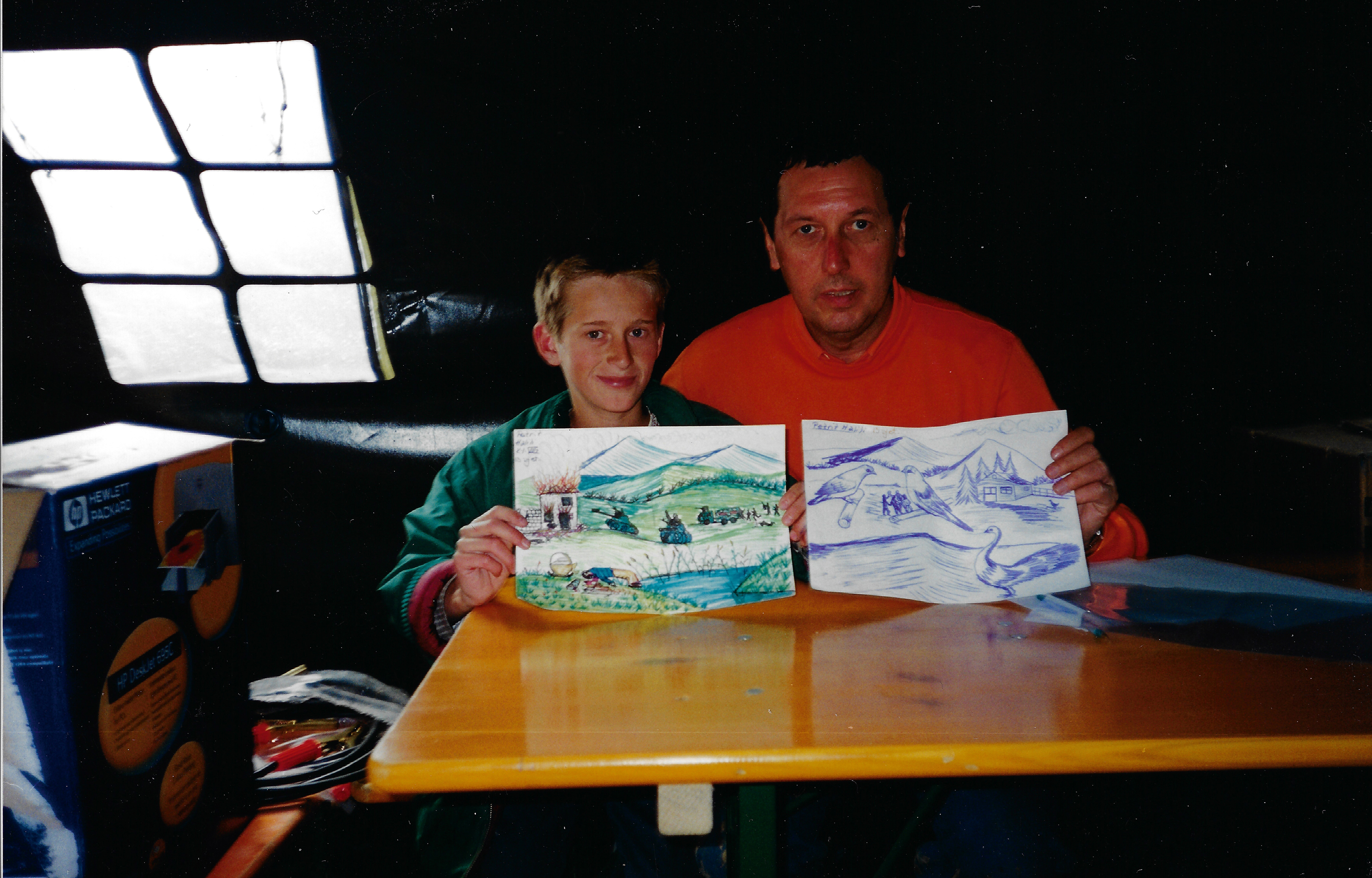
Halilaj with psychologist Giacomo 'Angelo' Poli at Kukës II refugee camp, Albania, April 1999. Archive of Giacomo Poli
He depicted scenes of devastation – military helicopters descending on Kosovo, tanks tearing their way through the countryside, homes going up in flames, soldiers holding civilians at gunpoint, a family being massacred. But with Poli’s encouragement, he also drew the same things he had drawn before the war, the idyllic landscapes and fantastic birds that now seemed a world away from his current situation but could offer a sense of normalcy and spiritual sustenance. Halilaj made quite an impression, first with his insistence on having twice the number of pens as other children (he is ambidextrous) and then with the drawings themselves, which attracted the attention of the international press and eventually the then UN secretary general Kofi Annan, who asked to see the young man on a visit to the camp.
Halilaj struck up an immediate friendship with Poli, who had to depart after 15 days, taking with him 38 artworks by Halilaj and leaving behind contact information and more drawing materials. ‘I wrote to him anytime I could in the years to come,’ Halilaj says. ‘Back in Italy he showed my drawings, alongside those of other kids, and persuaded his municipality to give me a grant to go to the only art high school in Kosovo after the war. Eventually, Angelo and his wife hosted me for three years when I was at university [the Brera Academy in Milan]. They became my second family.’
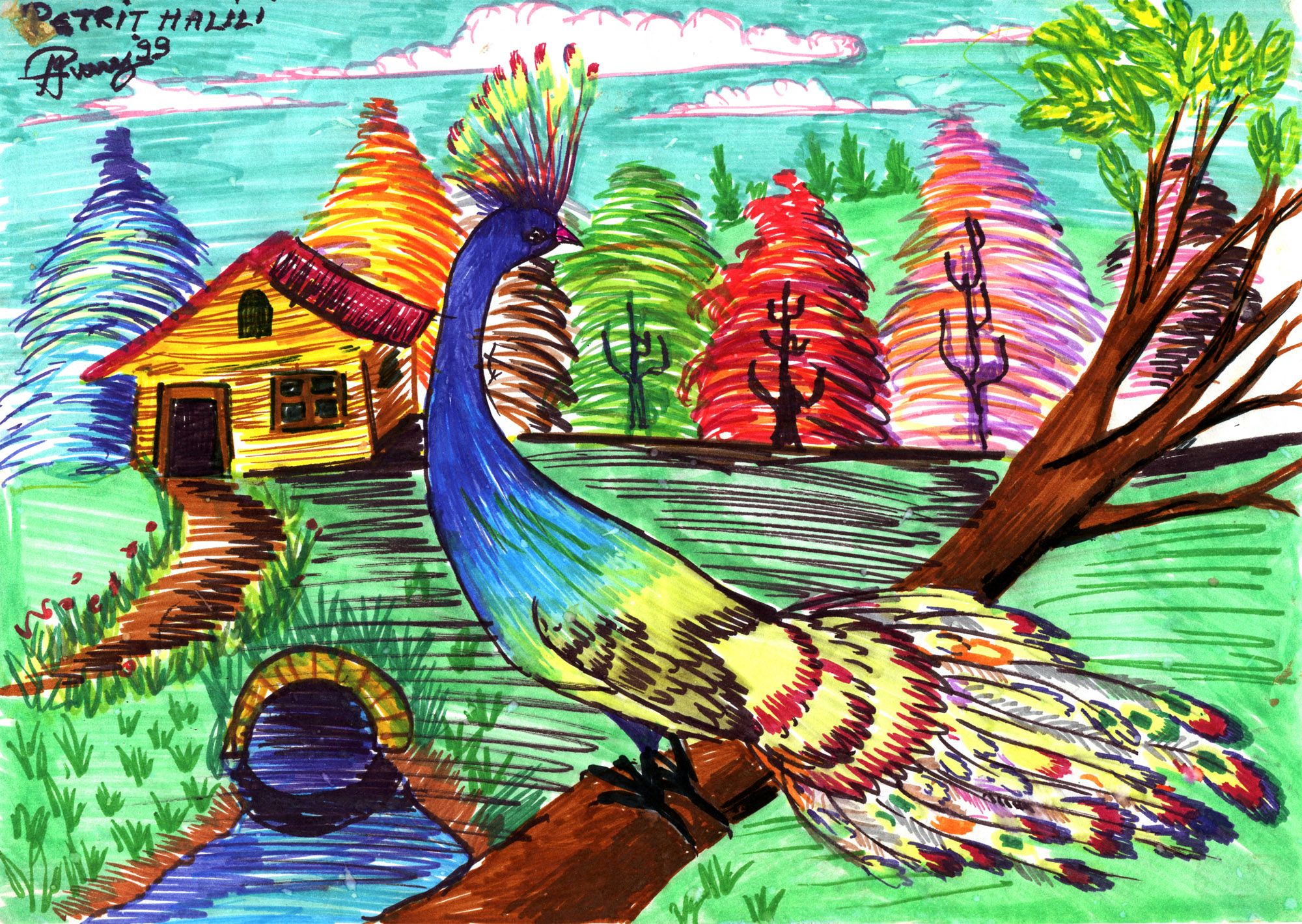
One of 38 felt-tip pen on paper drawings that Halilaj produced under Poli's guidance at Kukës II camp in 1999
Petrit Halilaj on the stories that shape our lives
It was thanks to his recent conversations with Poli that Halilaj decided to revisit his 38 early drawings for Tate St Ives. He asked Poli to scan the drawings (he still prefers that the psychologist keeps them), and they began to discuss them one by one. Five or six drawings in, ‘I started to be fascinated by how reality and fiction were already mixed in my mind [at the time], and I was asking questions about what I could do with such stories that shape your life, and how impossible it is to keep them frozen, because they still shape you’, explains the artist.
‘I thought it would be amazing to have the chance to elaborate on the idea of traumatic events talking to your biggest hopes and dreams, how the two can sustain each other.’
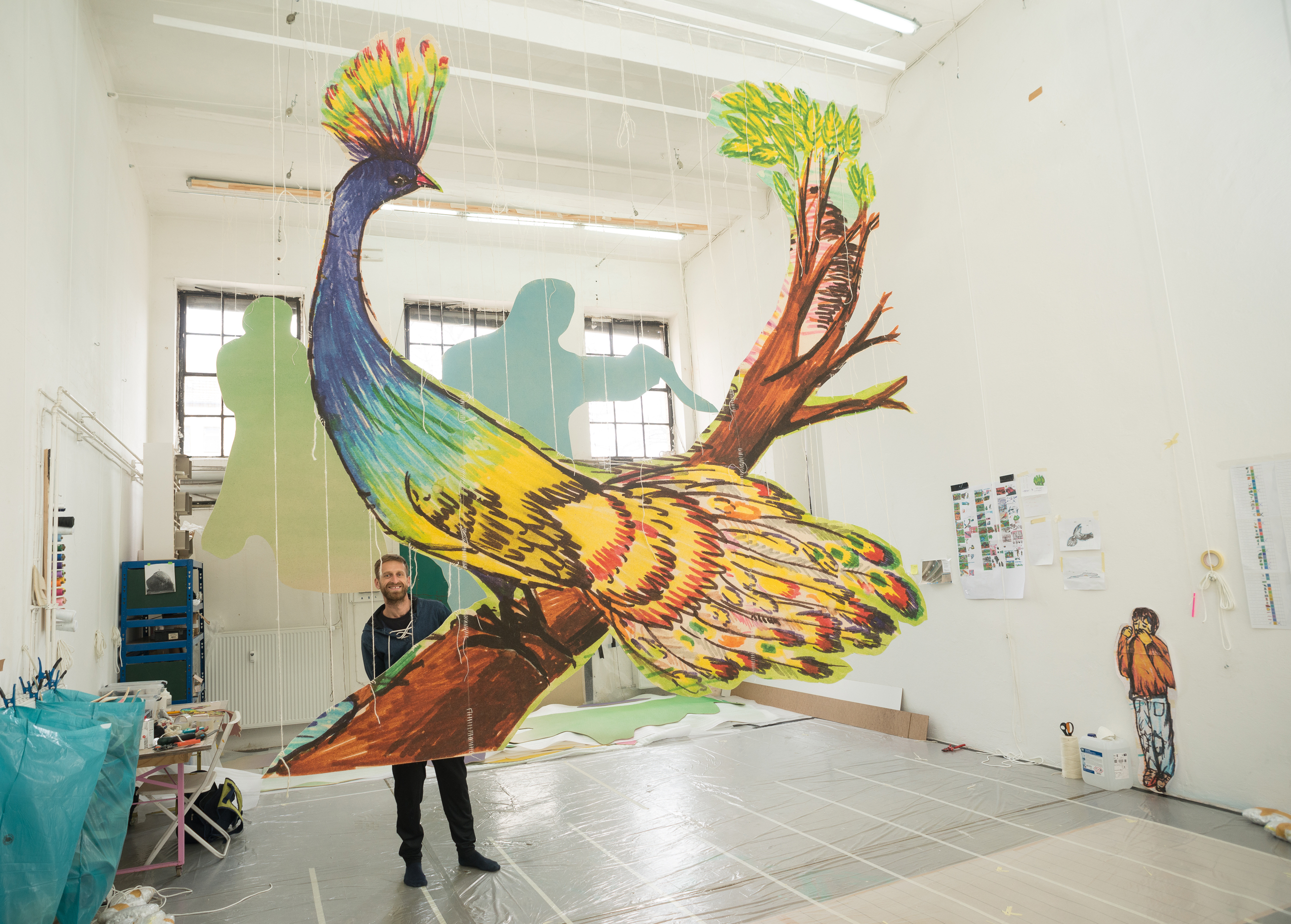
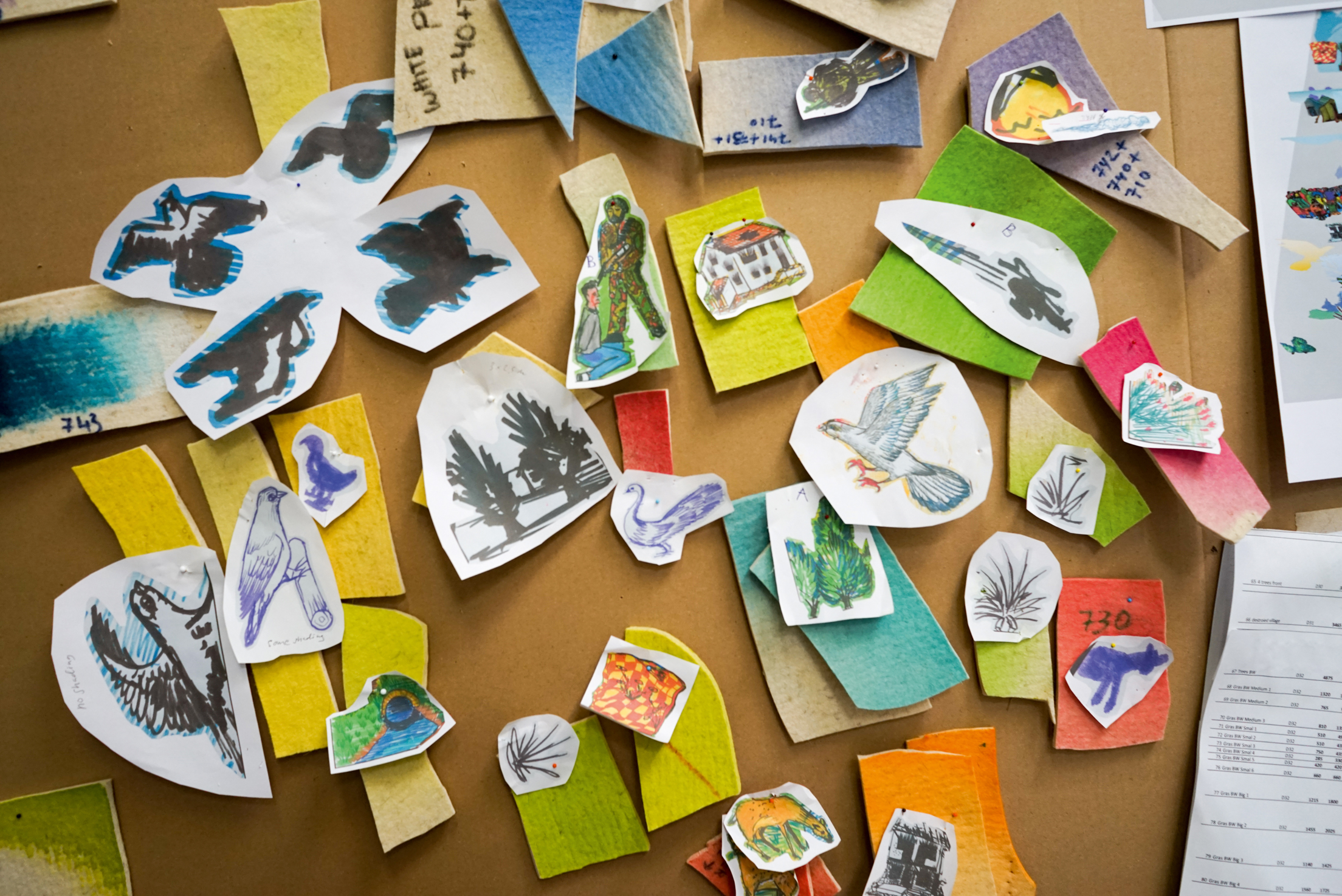
Top: Halilaj in his Berlin studio in spring 2021, with one of the giant fragments that will feature in his Tate St Ives exhibition. Above: detail of Halilaj’s Berlin studio, featuring scans from the artist’s childhood drawings with elements of devastation and escapism.
He was also inspired by the work that Poli had been doing with theatre techniques – acting as a way to process trauma. From there came the idea of creating an immersive environment in Tate St Ives’ largest gallery (measuring 26m x 16m x 7m), like a gigantic theatre set, formed from magnified fragments of the drawings suspended from the ceiling. Each fragment, an outsized piece of felt printed on one side and offering only a silhouette on the other, relates to either war or fantasy, and Halilaj is configuring them so that viewers, on entering the gallery, witness a happy, utopian scene featuring birds in vivid colours, unaware of the horrors that await. ‘The further you go in, the more the story of the war will unfold, and when you reach the other side and turn around, the impression is that of terror.’
Visitors exit the gallery from the same door they came in, so they have to traverse Halilaj’s environment from this wartime perspective. As they leave, should they choose to look back, they will once again encounter the original landscape, but in all likelihood they will struggle to shake off the visions of devastation, says the artist – ‘I’m interested in this idea that you will never see only the birds again. In your memory, it will always be the other side.’
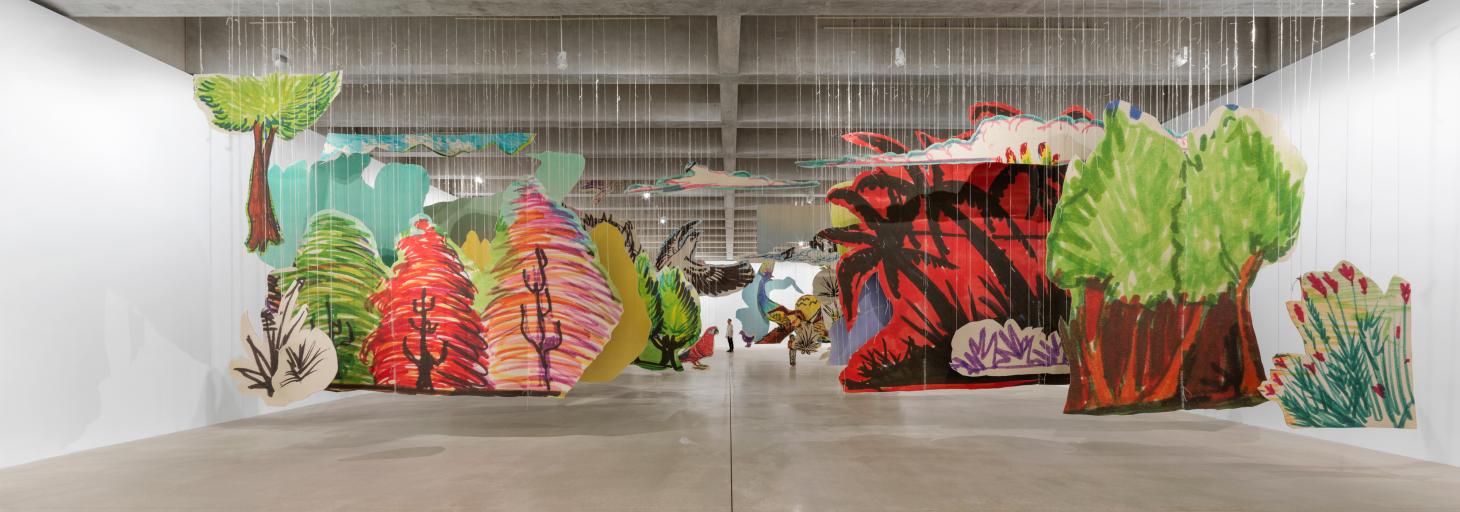
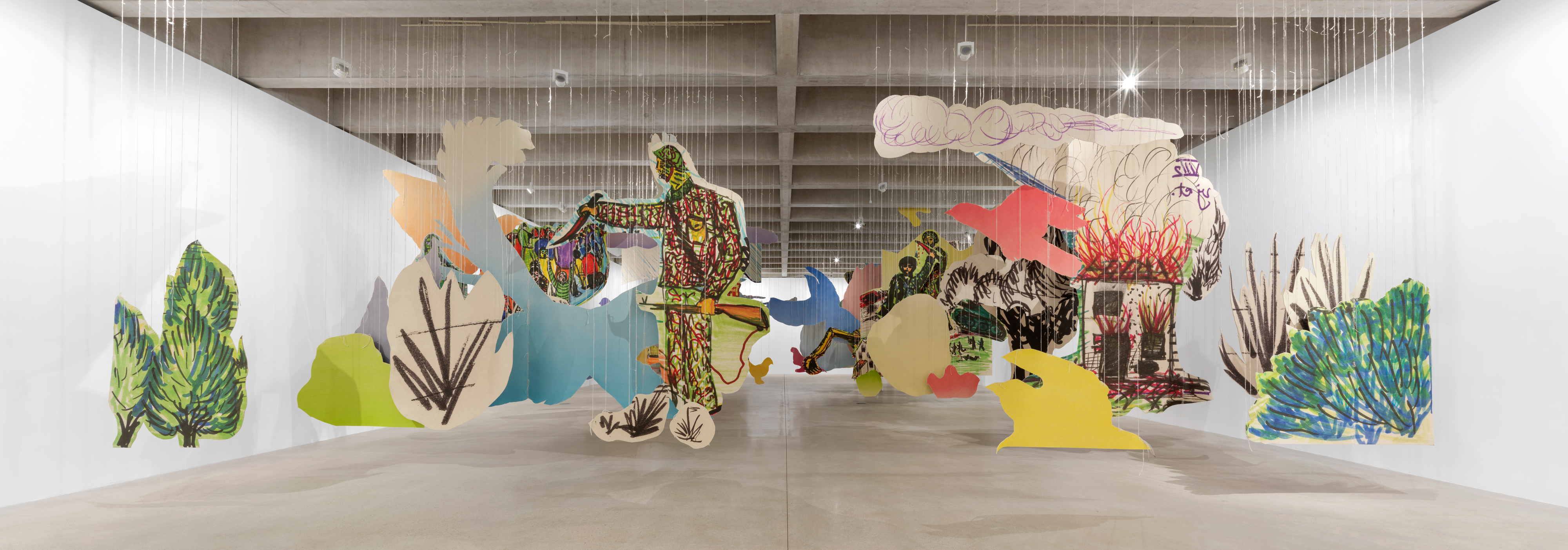
Petrit Halilaj's installation for Tate St Ives, Very volcanic over this green feather, 2021. The viewer first comes across bucolic landscapes and majestic birds (top), but once they reach one end of the gallery and turn around, they are confronted with scenes of wartime devastation (above). courtesy of Tate Photography
Titled Very volcanic over this green feather, the work encourages empathy with the victims of war, but also articulates a certain optimism: while most of the 84 fragments hover mid-air, one is placed on the floor and printed on both sides. It’s the child from the drawing that Halilaj had presented to Annan in 1999, and in the context of this installation it feels autobiographical. ‘There’s a magic to bringing together all these different events in your life, and building a new story with them somehow,’ says Halilaj, who considers himself one of the lucky ones, to not only have survived the war but also found a better life afterwards.
To contextualise the installation, Halilaj is dedicating an adjoining gallery space to additional information about the war, and the political and social contexts that continue to impact Kosovar society and diaspora. Among the exhibits will be a replica of his grandfather’s diary, which sees recollections of normal life brutally interrupted by vignettes of war, and a photo album from Poli, alongside Annan’s notes on the Kosovo war and footage of his visit to Albania, to contrast local and international perspectives.
‘I share the story of presenting my drawing to Kofi Annan. He asked me to give it to him, so he could bring it to the UN for a meeting on Kosovo the next week, and all the nations would see it. Today, I understand what he was saying. But at the time, I just remember my father saying that the war would have stopped earlier if Annan had wanted. So I didn’t give it to him,’ recalls the artist.
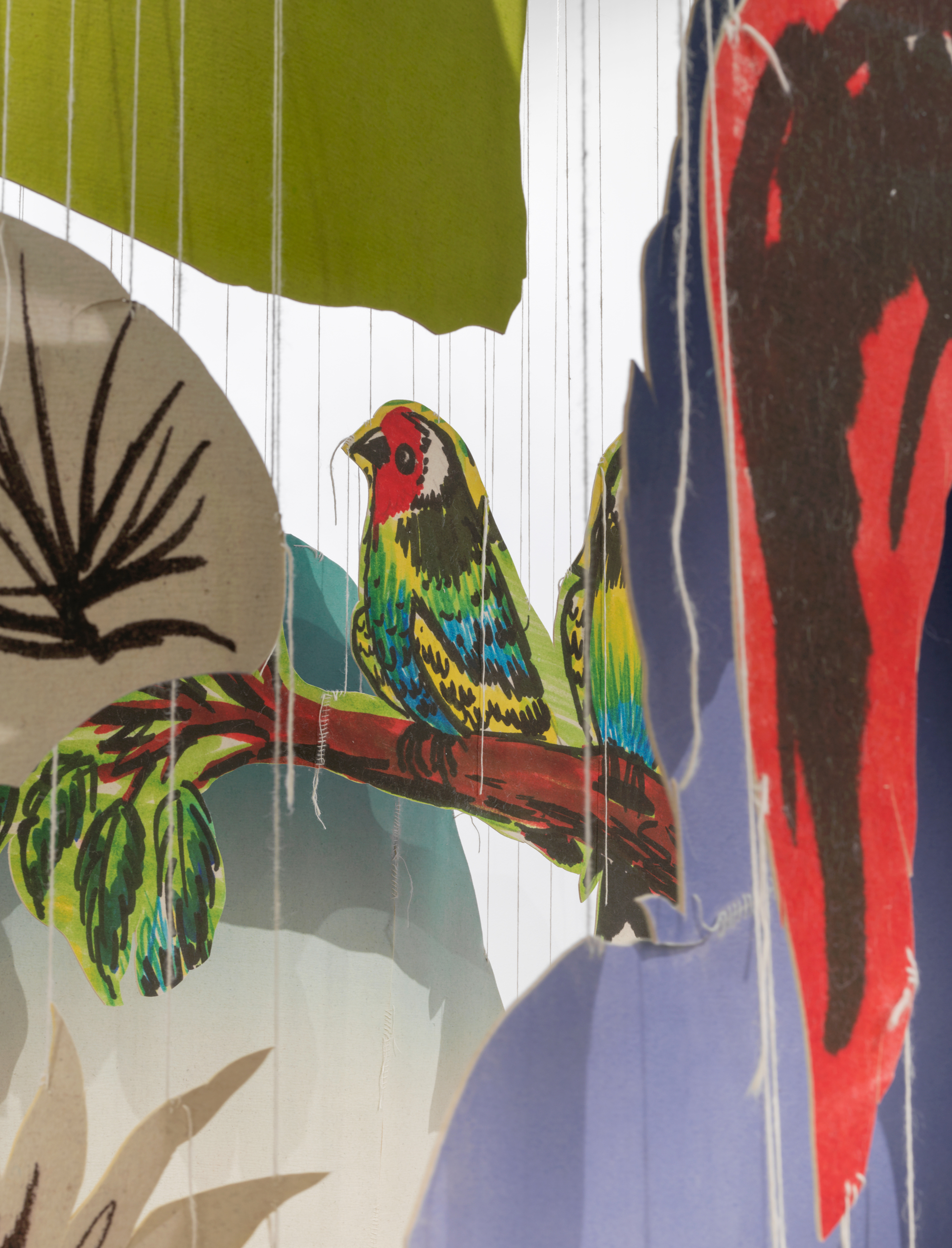
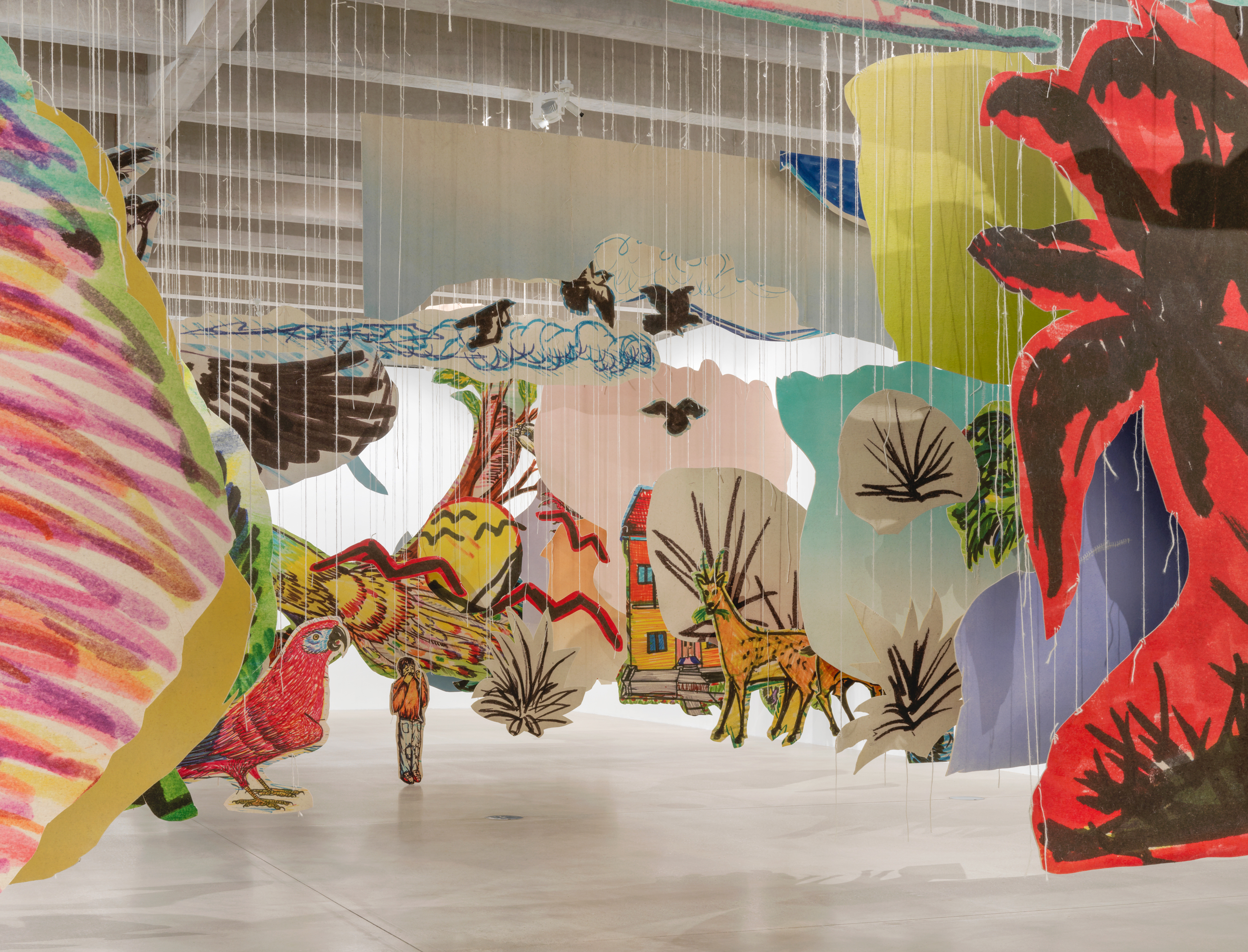
courtesy of Tate Photography
Petrit Halilaj’s installation for Tate St Ives, Very volcanic over this green feather, 2021. Top, gently frayed rope and visible stitches add an element of tactility to the installation; above, at the centre of the installation is the only element printed on both sides and touching the ground – a crying boy from the drawing that the artist had presented then UN secretary general Kofi Annan at Kukës II refugee camp, Albana in 1999.
Trauma, hope and joy
Halilaj’s exhibition has been curated by Anne Barlow, director of Tate St Ives, who says she is ‘captivated by the power and presence of what he does. [This] significant new work is perhaps his most personal reflection on the trauma of the Kosovo war, shaped through the perspective of time. It draws on his own experiences of the war, but it also acts as a touchpoint for the memories and experiences of others, and this in turn opens up important conversations for all of us about the unique perspectives that art can bring to issues like conflict, displacement and oppression.’
Halilaj admits that he embarked on this exhibition to move past his own traumas. ‘Actually, you learn that trauma will always be in life,’ he reflects. ‘It’s just how we use it, and what we do with it that can change, that’s in our hands.
‘It’s not in our hands to take trauma out of our lives. It’s what makes us who we are.’
A photo posted by on
Halilaj at his Tate St Ives installation
In a way, Very volcanic over this green feather dovetails with an installation that Halilaj and his life partner, fellow artist Alvaro Urbano, created for Madrid’s Palacio de Cristal last year. Transforming the glasshouse into a giant bird’s nest, they installed a series of enlarged flowers (made from painted canvas stretched over a steel framework) that represent milestones in their relationship. The installation not only stood as a dedication to queer love, but also expressed an aspect of Halilaj’s identity that he once thought incompatible with his Kosovan heritage – ‘We don’t have Pasolini, we don’t have Almodóvar’, he quips in reference to his country’s lack of prominent queer figures.
Happily, the tides seem to be changing; this July, he and Urbano were invited to present the flowers under the cupola of the National Library of Kosovo, as part of the Autostrada Biennial and coinciding with the nation's fifth annual Pride Week. It felt like a homecoming, he tells me, a testament to the joys of living authentically and without fear, of sharing one’s full self with the world.
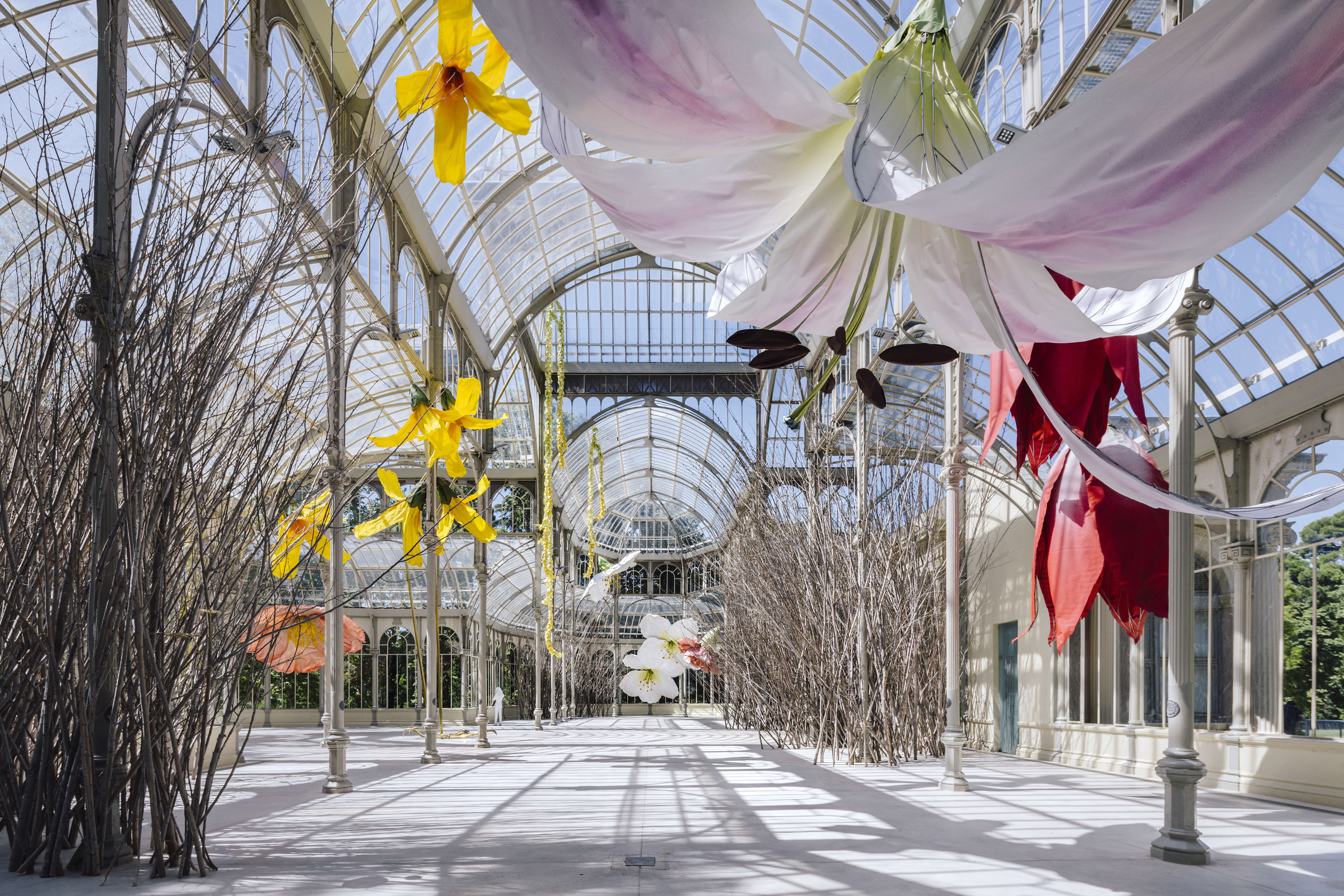
A post shared by Alvaro Urbano (@alvaro_urbano)
A photo posted by on
Top: To a raven and hurricanes that from unknown places bring back smells of humans in love, by Halilaj and his life partner Alvaro Urbano at Madrid’s Palacio de Cristal in 2020. The artists created an installation of giant flowers, made from painted canvas stretched over steel frames, representing milestones in their relationship. courtesy of the artist, ChertLüdde, Berlin, Kamel Mennour, London/Paris. Above, Urbano (left) and Halilaj under the cupola of the National Library of Kosovo in July 2021, with their giant flowers installed for the Autostrada Biennal, and coinciding with Kosovo Pride Week
INFORMATION
‘Very volcanic over this green feather’, 16 October 2021 – 16 January 2022, Tate St Ives, tate.org.uk
TF Chan is a former editor of Wallpaper* (2020-23), where he was responsible for the monthly print magazine, planning, commissioning, editing and writing long-lead content across all pillars. He also played a leading role in multi-channel editorial franchises, such as Wallpaper’s annual Design Awards, Guest Editor takeovers and Next Generation series. He aims to create world-class, visually-driven content while championing diversity, international representation and social impact. TF joined Wallpaper* as an intern in January 2013, and served as its commissioning editor from 2017-20, winning a 30 under 30 New Talent Award from the Professional Publishers’ Association. Born and raised in Hong Kong, he holds an undergraduate degree in history from Princeton University.
-
 Sound and vision are combined in this Dyson x Porter bag and wireless headphone combo
Sound and vision are combined in this Dyson x Porter bag and wireless headphone comboDyson’s first limited edition collaboration with cult Japanese bag brand Porter brings together the OnTrac headphones with a stylish shoulder bag
-
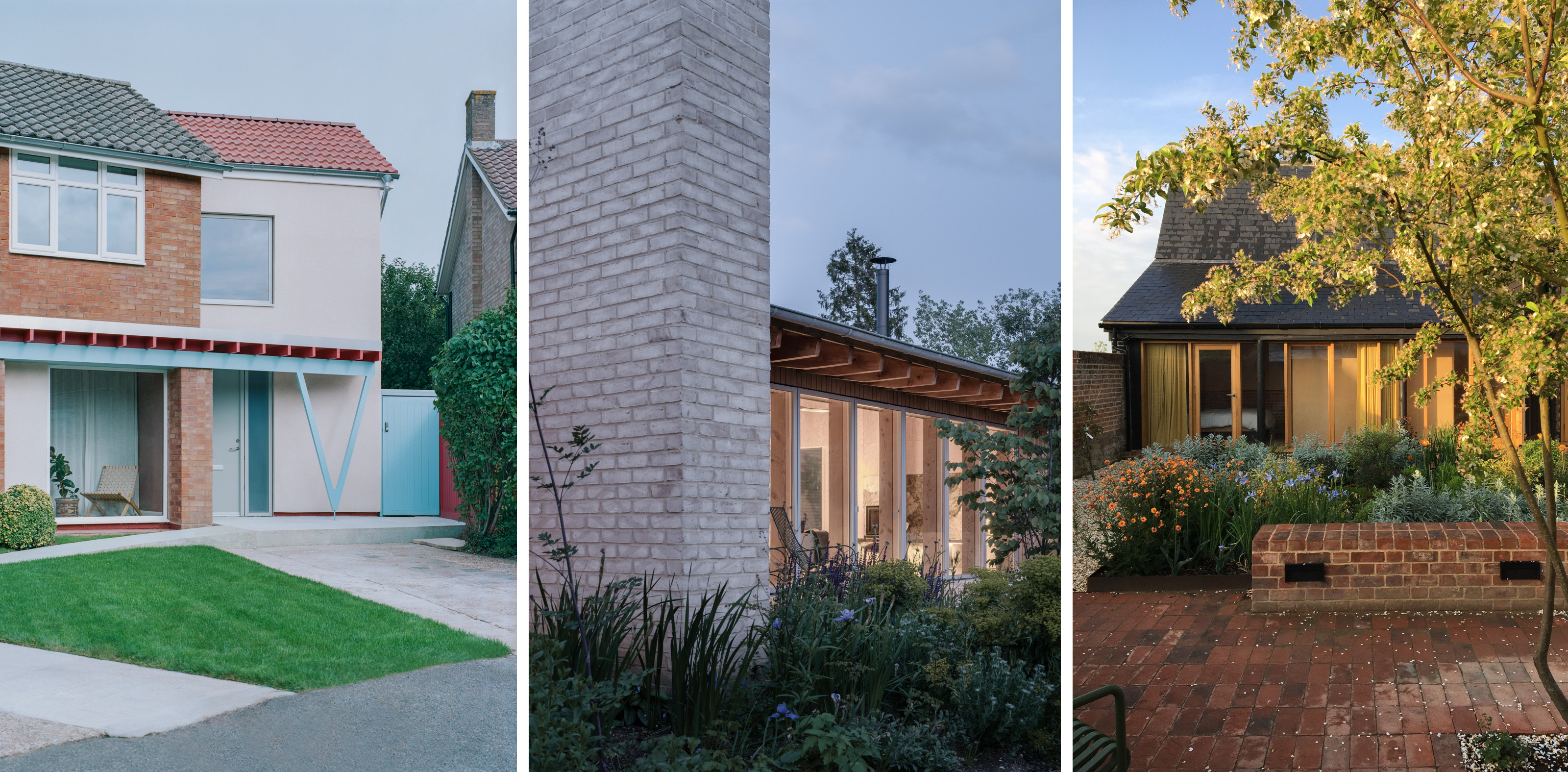 RIBA reveals more three shortlisted structures for 2025’s House of the Year award
RIBA reveals more three shortlisted structures for 2025’s House of the Year awardThree more houses join the shortlist for the UK’s highest domestic architectural accolade. We explore the Triangle House, Amento and Jankes Barn
-
 JLR is a mainstay of modern motoring luxury, but do car brands need creative figureheads?
JLR is a mainstay of modern motoring luxury, but do car brands need creative figureheads?With Gerry McGovern departing from Jaguar Land Rover, what next for the Indian-owned, British-built house of brands?
-
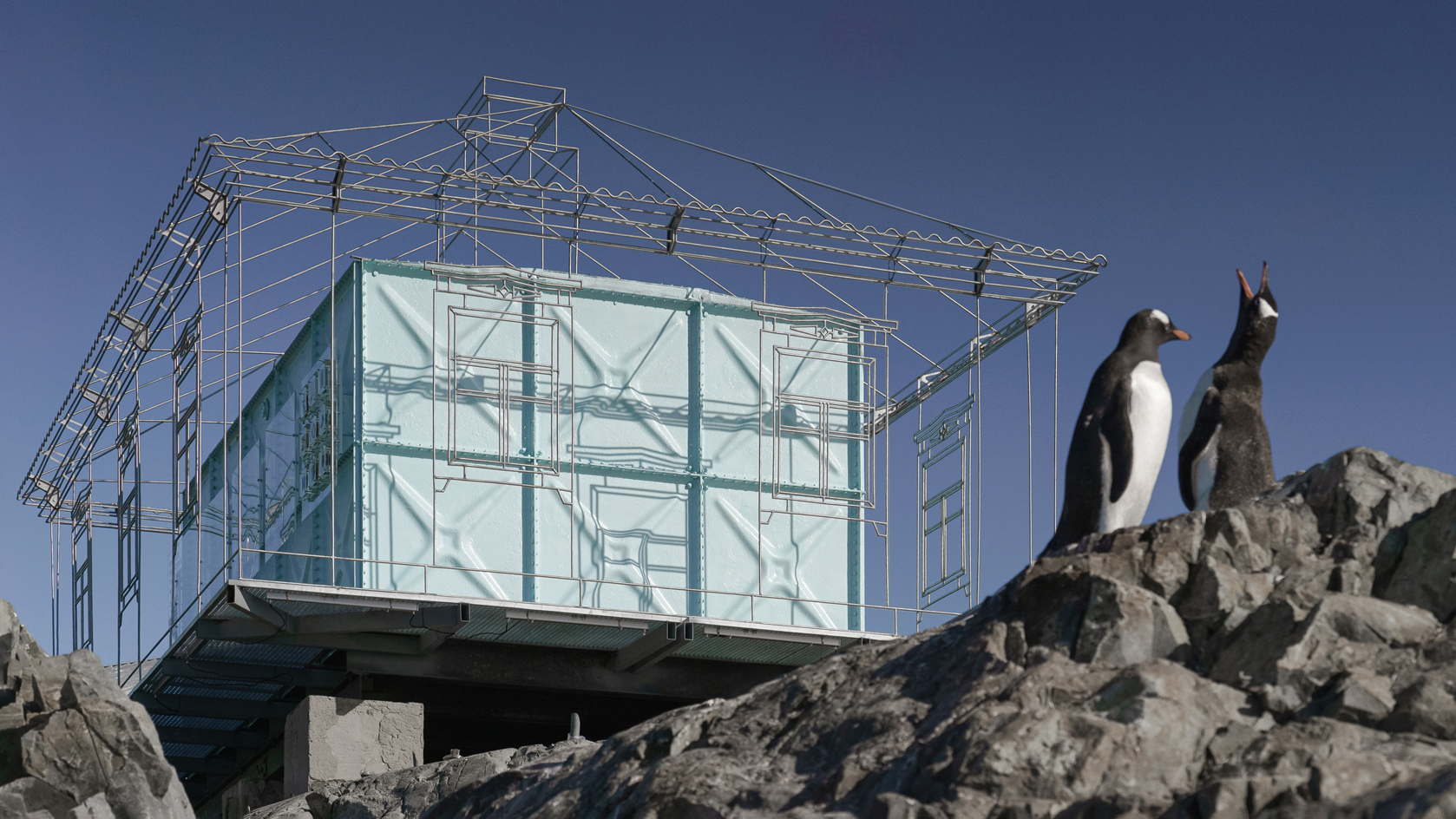 Remote Antarctica research base now houses a striking new art installation
Remote Antarctica research base now houses a striking new art installationIn Antarctica, Kyiv-based architecture studio Balbek Bureau has unveiled ‘Home. Memories’, a poignant art installation at the remote, penguin-inhabited Vernadsky Research Base
-
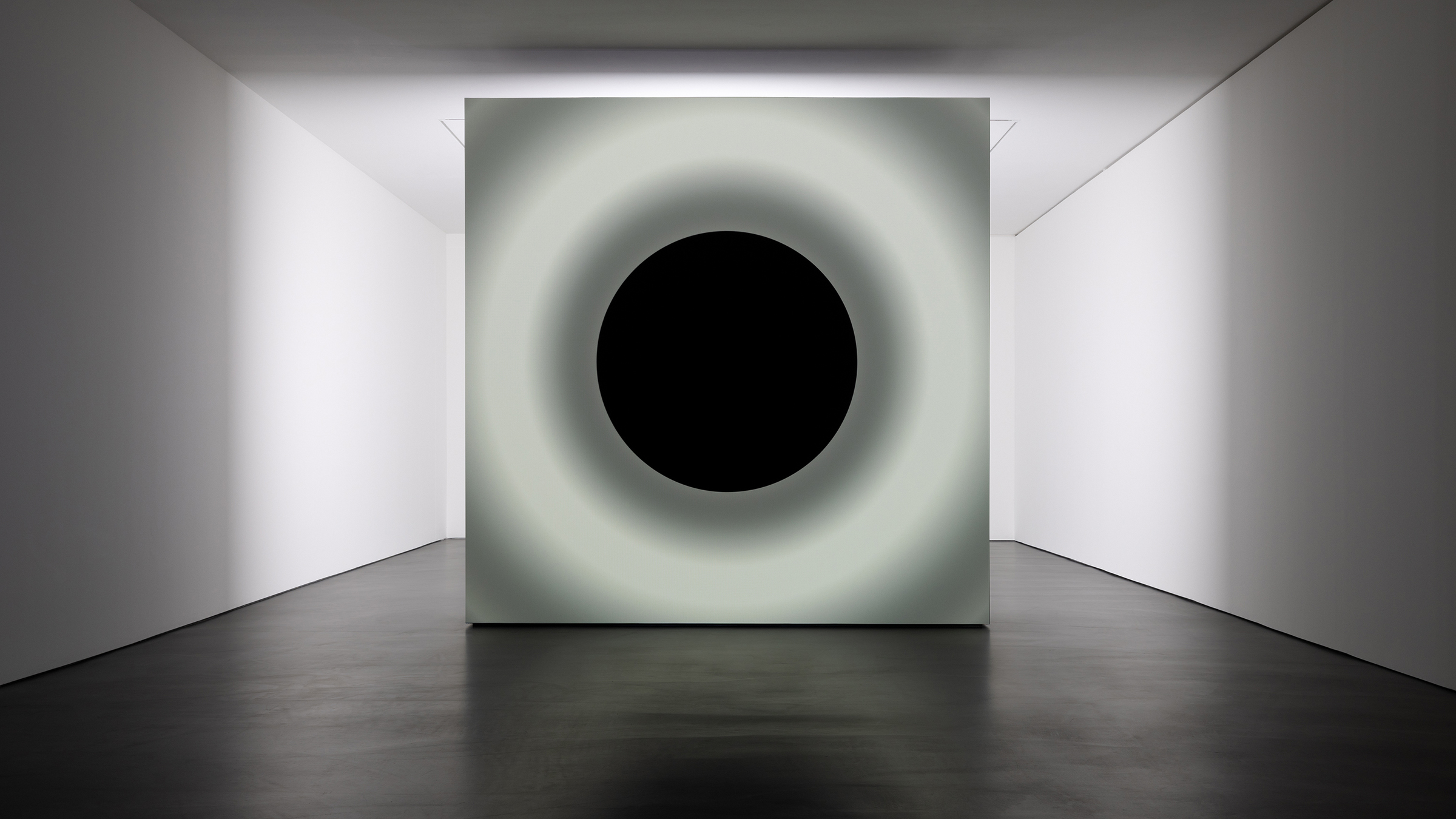 Ryoji Ikeda and Grönlund-Nisunen saturate Berlin gallery in sound, vision and visceral sensation
Ryoji Ikeda and Grönlund-Nisunen saturate Berlin gallery in sound, vision and visceral sensationAt Esther Schipper gallery Berlin, artists Ryoji Ikeda and Grönlund-Nisunen draw on the elemental forces of sound and light in a meditative and disorienting joint exhibition
-
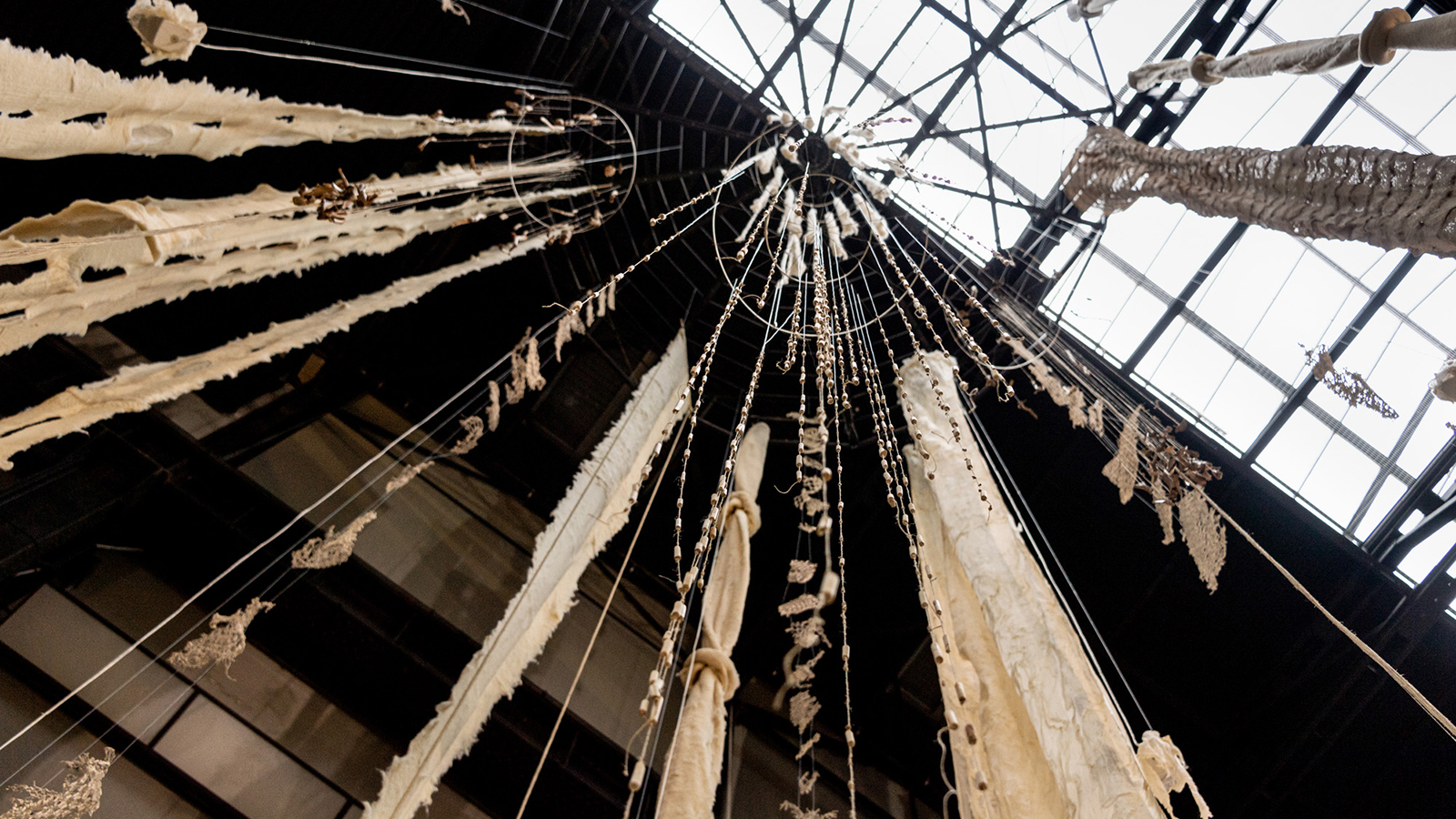 Cecilia Vicuña’s ‘Brain Forest Quipu’ wins Best Art Installation in the 2023 Wallpaper* Design Awards
Cecilia Vicuña’s ‘Brain Forest Quipu’ wins Best Art Installation in the 2023 Wallpaper* Design AwardsBrain Forest Quipu, Cecilia Vicuña's Hyundai Commission at Tate Modern, has been crowned 'Best Art Installation' in the 2023 Wallpaper* Design Awards
-
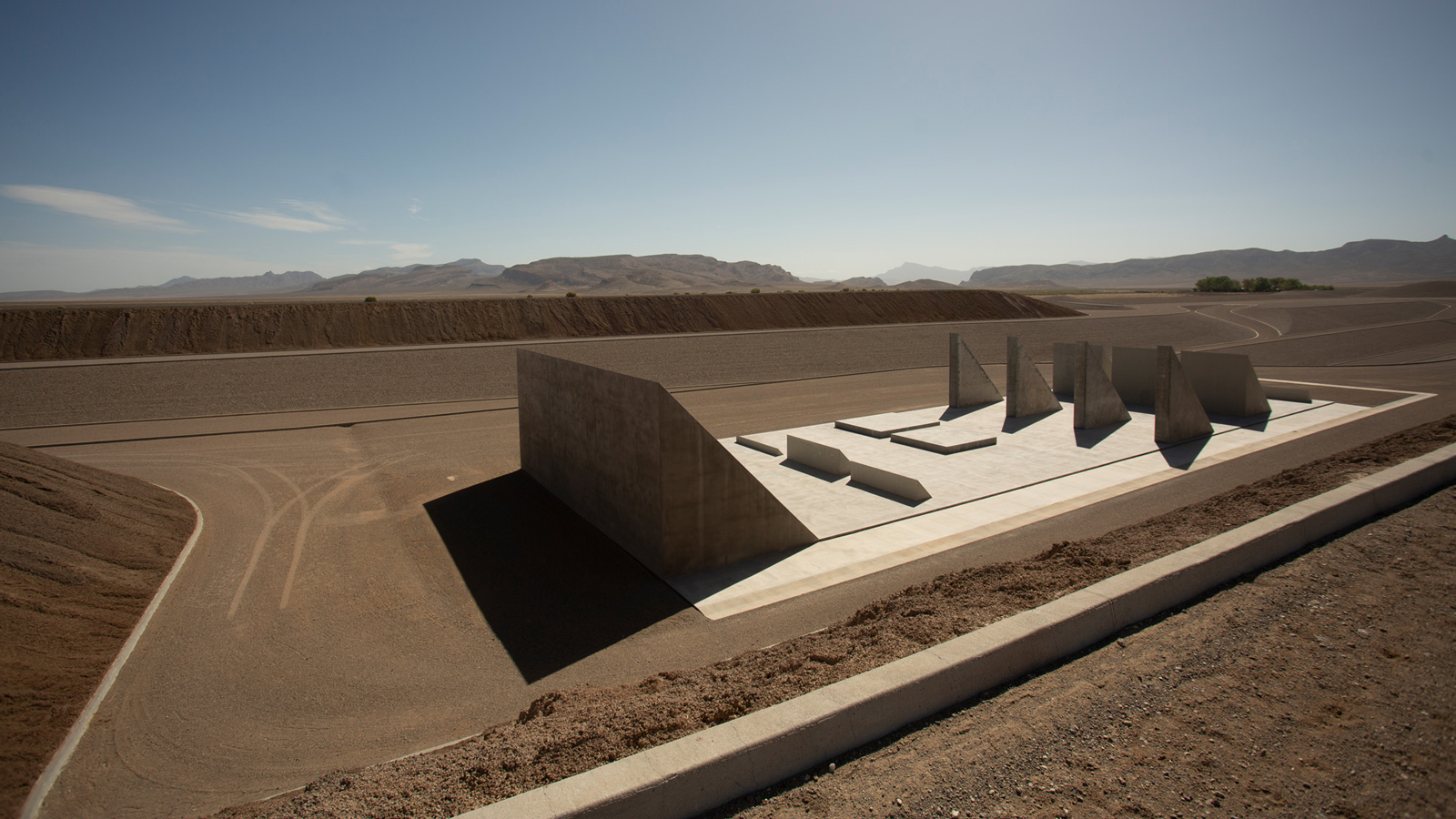 Michael Heizer’s Nevada ‘City’: the land art masterpiece that took 50 years to conceive
Michael Heizer’s Nevada ‘City’: the land art masterpiece that took 50 years to conceiveMichael Heizer’s City in the Nevada Desert (1972-2022) has been awarded ‘Best eighth wonder’ in the 2023 Wallpaper* design awards. We explore how this staggering example of land art came to be
-
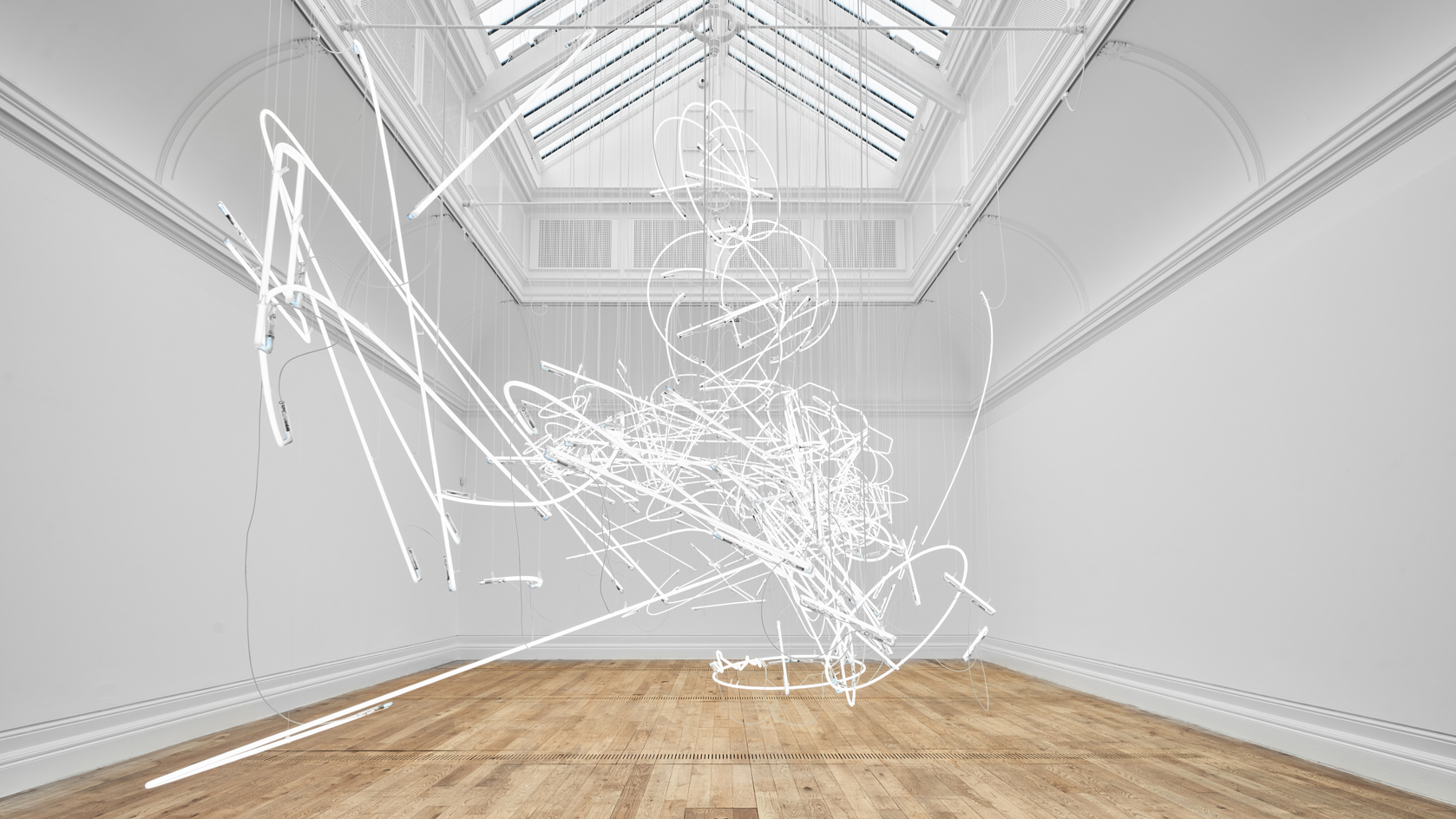 Cerith Wyn Evans: ‘I love nothing more than neon in direct sunlight. It’s heartbreakingly beautiful’
Cerith Wyn Evans: ‘I love nothing more than neon in direct sunlight. It’s heartbreakingly beautiful’Cerith Wyn Evans reflects on his largest show in the UK to date, at Mostyn, Wales – a multisensory, neon-charged fantasia of mind, body and language
-
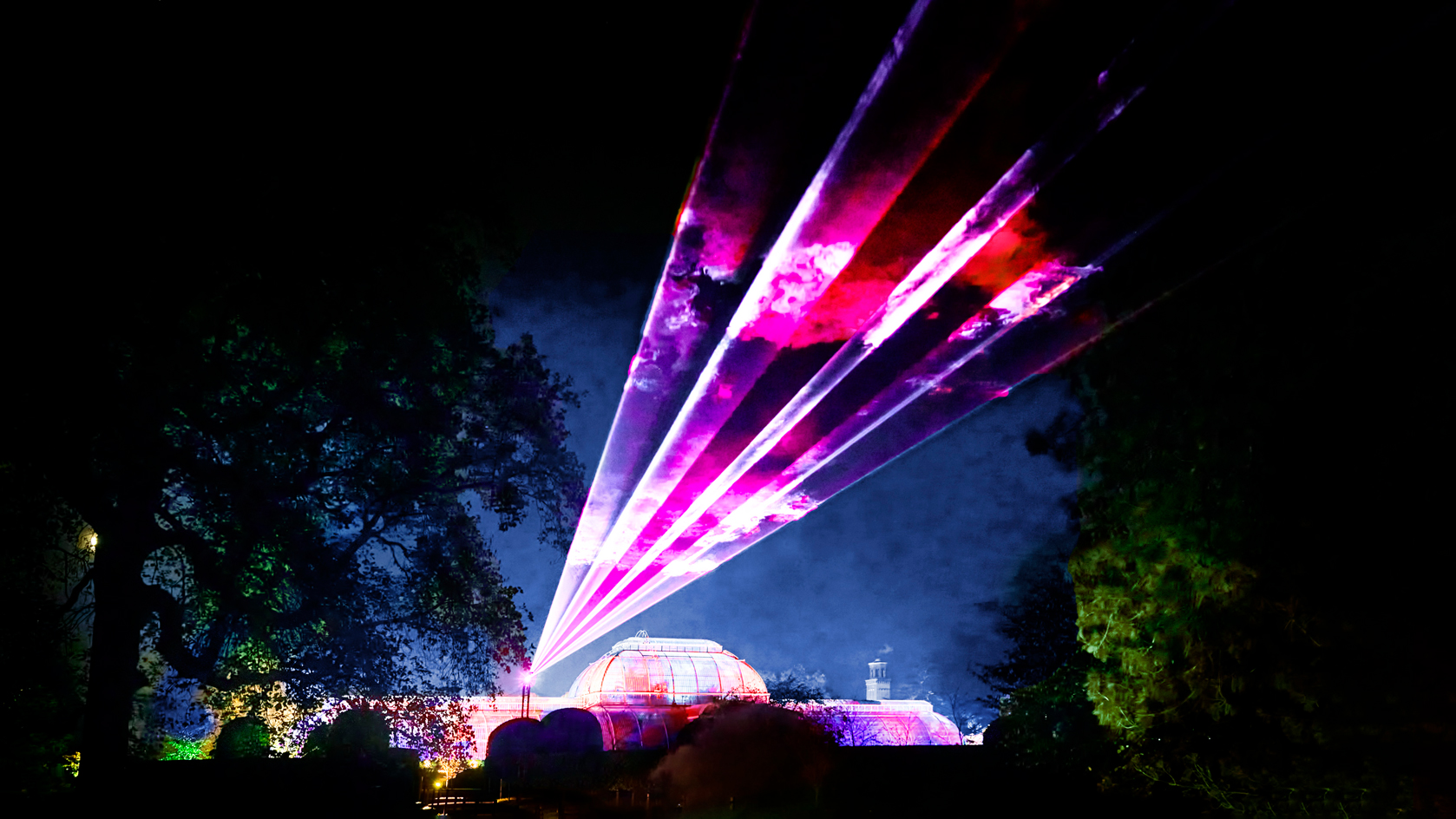 The best 7 Christmas installations in London for art lovers
The best 7 Christmas installations in London for art loversAs London decks its halls for the festive season, explore our pick of the best Christmas installations for the art-, design- and fashion-minded
-
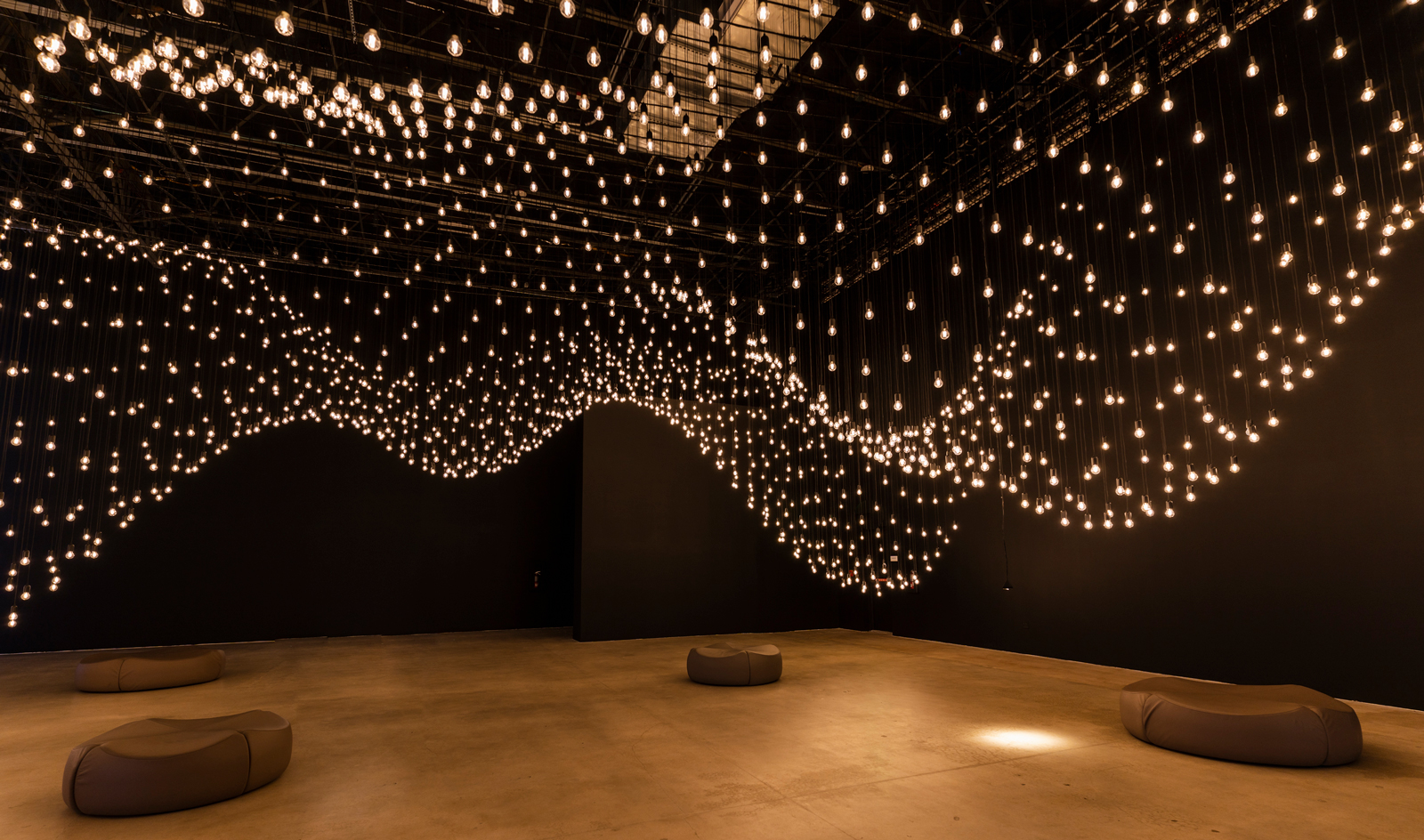 Rafael Lozano-Hemmer’s Pulse Topology in Miami is powered by heartbeats
Rafael Lozano-Hemmer’s Pulse Topology in Miami is powered by heartbeatsRafael Lozano-Hemmer brings heart and human connection to Miami Art Week 2022 with Pulse Topology, an interactive light installation at Superblue Miami in collaboration with BMW i
-
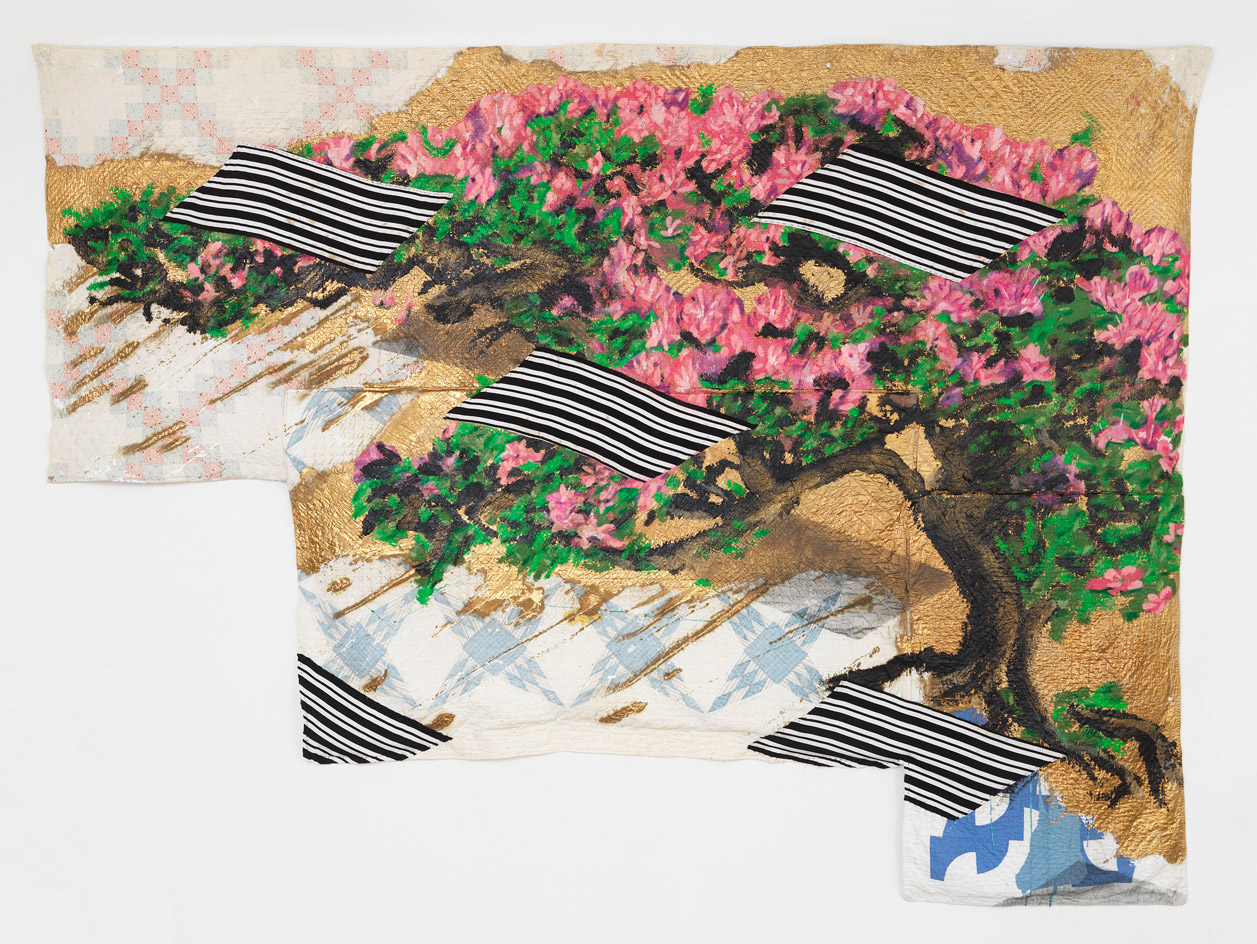 Textile artists: the pioneers of a new material world
Textile artists: the pioneers of a new material worldThese contemporary textile artists are weaving together the rich tapestry of fibre art in new ways